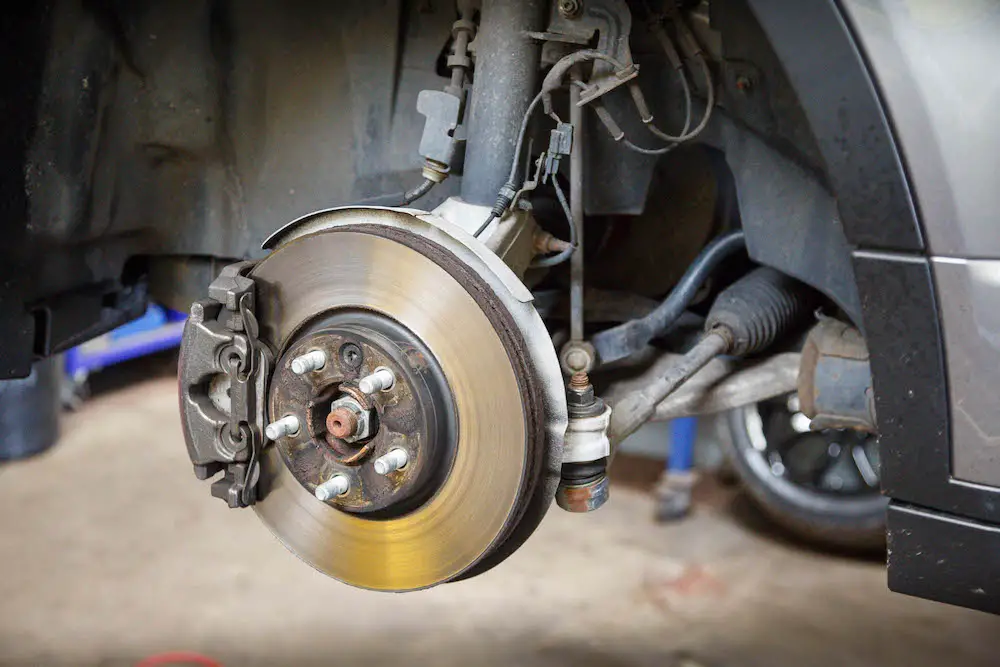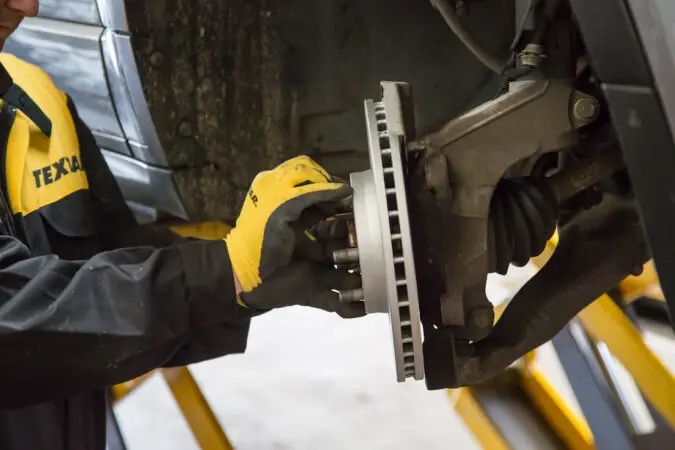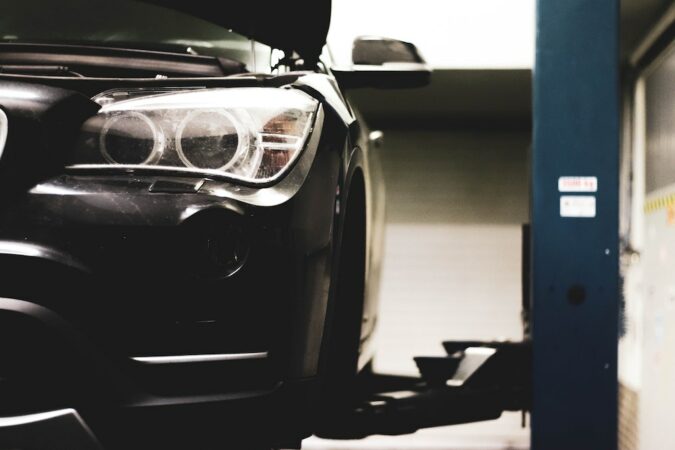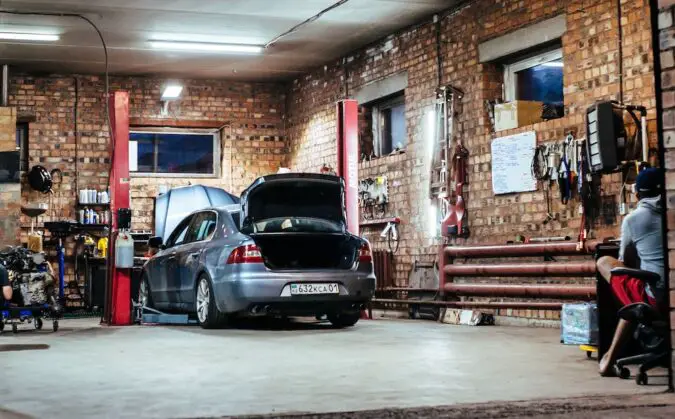Are you experiencing some weird noises coming from your front suspension? Well, maybe it’s just a lower control arm bushing. If you suspect this, then you are at the right place because there will be a lot to cover on this topic.
Having a problem with the bushings can be a really frustrating thing to deal with. Namely, because it is a real pain to get them out of the car. Meaning that the process of doing this is so labor-intensive that you will rather replace them altogether and not have to deal with the pain of removing these bushings from your control arms.
Removing them requires tooling and it is a rather tedious process. But sometimes it can also be other things that could make noises or ruin your driving experience when it comes to the suspension. That’s why you need to know how to troubleshoot and inspect components for possible failures and determine if these components are good or not. If they are not, then you will have to replace them. But for the sake of simplicity in this article, we will stick to the lower A-arm.
First, we will learn what this A-arm is and we will focus primarily on the front control arm. Then we will cover the upper and lower control arm as well as the symptoms that you will notice whenever you face this problem. Then we will learn how to diagnose the issue and the lower control arm replacement cost. So, if you want to learn more, please follow along till the end.
What Is A Lower Control Arm
Now before we dive into more complex topics like the symptoms of a bad control arm. Let’s start from the basics and that is what is a lower control arm in general? How you can tell that this is a lower control arm and what role does it play in your suspension? Let’s find out.
A control arm is basically the one component that keeps your whole suspension together. In the past, there were two control arms on vehicles. An upper one and a lower one.
This design is still used on trucks and vehicles that require beefier suspension to tackle some serious obstacles. But for your regular commuter car, a lower control arm is enough.
Meaning that our cars usually have a lower one. This A-arm is really beefy and resembles a triangle. There is one side where there are two connecting bushings and this side connects to the front clip of the car.
The other side connects with the knuckle. The knuckle basically connects all of the suspension components like the A-arm, strut, ball joints. But for the sake of simplicity in this article, we only focus on the control arms. Especially the lower control arm. But if you didn’t know, there are two of these on our cars and in the following chapter, we are going to explain them in depth.
Front Lower Control Arm
Now before we cover the symptoms of a bad lower control arm. Let’s learn more about the front control arm.
As you probably know, this is the arm that is mounted on the front suspension. The rear one is for the rear wheels. They are really different in shape and size.
The front one is much stiffer and beefier. Mainly because the impacts that it gets are much harder and this component needs to be stiff to survive the harsh conditions on the road.
If this arm is soft, it will easily crumble and cause a ton of problems for you as a car owner. And frankly, that is something that you don’t really want in your life.
That’s why you need to be aware of these control arms and what they are doing. Your main focus should be on the bushings. But what is the difference between an upper and lower control arm? Well, that’s what we are going to cover next.
Upper And Lower Control Arm
Now let’s discuss the differences between the upper and lower control arm? And the main difference between the two is that the upper control arm is mounted at the top. While the lower one is mounted at the bottom.
They both are doing the same thing which is holding the wheel in place. The only difference is the applications in which the upper one is used.
Even though cars in the past used both of these arms, this design is now really outdated. It delivers a lot of rigidity. But it kinda affects the handling of the car. That’s why car makers have ditched the upper arm in favor of the lower one.
Meaning in modern cars, there are only lower control arms. But this doesn’t mean that this design with two arms is not used on heavy-duty vehicles.
Pickup trucks still are using this design. This is essential because these are heavy-duty vehicles that need to do work under heavy loads.
So, if you have a commuter car, the upper and lower control arm should not confuse you because you probably have only a lower one. But what are the causes that often make this component fail? Let’s elaborate on them in the following chapters.
Causes Why The Control Arm Fails?
Now let’s discuss some of the common causes why the lower control arm fails. The causes that we are going to list are one of the most common causes for this component to fail and not behave as it did before when it was in good condition. Now let’s cover them in the following chapters and elaborate more on them. This will help you understand how your arm has failed.
1. Damage By Accident
The first thing that could cause a failure of the lower control arm is damaged by accident. Let’s make an example. You go fast on the road and there is a pothole that you don’t notice. You go over this pothole and your suspension gets tweaked.
This is something that nobody really wants but it happens. This could tweak your suspension components and make them unusable. Or possibly mess up your wheel alignment.
In addition to this, there is collision damage. This type of damage occurs when the car collides with another car or an object. The suspension components can get tweaked and you suffer from symptoms of bad alignment or the whole suspension to be crumbled and torn apart.
Both of these situations are dangerous and something that you don’t really want happening in your car. That’s why you need to adjust your speed on the road if you don’t want to get involved in an accident and end up tweaking your suspension components including the lower control arm. Now let’s move to the next probable cause for problems with this suspension component.
2. Worn Lower Control Arm Bushing Or Ball Joint
The second most probable cause for failure is bad bushings. As you probably know, there are two bushings on each control arm and one lower control arm ball joint. These components guarantee that you will not experience vibrations or weird noises while you drive your car. These bushings are attached to the front frame of the car.
These are rubber components that often after many years of use and abuse tend to fail. They are starting to develop cracks and fail. There is oil inside of them that often leaks out whenever they are too damaged.
At this point, you will start to experience different kinds of symptoms on your vehicle. These symptoms can be mild and they can also be very serious. In the next chapters, we will cover them in great detail. So, follow along if you want to learn how you can diagnose this problem.
When To Replace Lower Control Arm
Now as we learned the causes of a bad lower control arm. Let’s now cover the symptoms that often occur when you have a problem with this component. What could you expect to happen when this component breaks down?
This is really essential information for you to be able to determine if you have a bad control arm bushing and if you need a control arm replacement. So, what are the symptoms of this problem? Let’s elaborate on them in the following chapters in depth.
1. Clunking Or Squeaking Sounds When Going Over Potholes
The first symptoms that you will experience when you have worn out bushings on your car’s lower control arm are the clunking noises. These noises will be really annoying.
You will notice them especially when you go over bumps. In the beginning, they will start with little squeaks but after the problem becomes bigger, there will be worse and worse performance.
This will be the case because the rubber material inside of the bushings will be gone and there will be a ton of play where these bushings sit.
Especially when you drive over potholes at higher speeds, you will be able to feel these potholes literally. So, whenever you notice something like this it is advisable for you to inspect these bushings and see if they are in good condition.
Later on in this article, we are going to explain how these bushings are diagnosed. Now let’s move on to the next symptoms that indicate a problem like this.
2. Vibrations On The Steering Wheel
The second symptom of a bad lower control arm that we want to discuss is the issue with the vibrations that will be felt through the steering wheel while you drive.
As you know, the bushings on the control arm serve the purpose of absorbing the small impacts that you get whenever you drive. Their prime goal is to stop the control arm from wearing out and also to make sure that the vibrations are absorbed.
If they are not in good condition. You will have a problem with vibrations inside of the cabin. Whether the dash will start to rattle or the steering will vibrate, the situation will not be good for you as a driver.
Just be aware also of the motor mounts. These components can also cause vibrations and rattles inside of the cabin. The important thing is to get the main point of these rubber components.
How they work and what symptoms could cause. The bushings, mounts, or other rubberized components are one of the main culprits for vibrations. Now let’s move to the next symptom.
3. Steering Wheel Not Straight
The third symptom of a bad lower control arm that we are going to cover is the situation when you have loose steering. Meaning that the steering wheel will not be straight if the bushings are too damaged or there is possibly a bent arm.
If the car was in the accident, then for sure the suspension could be off by a big margin. And so the steering wheel. It will not be dead center but it will point in a different direction.
https://www.youtube.com/watch?v=P_JINLuHWzA
Driving like this with this type of suspension is not something that I would recommend because it is rather dangerous. You will constantly need to adjust the steering wheel to make sure that everything is in check and your car doesn’t wander around on the highway. Not an ideal situation and a clear example that something is off with the front lower control arm. Now let’s move to the next symptom.
4. Uneven Tread Wear
Uneven tread wear is another symptom for both the upper and lower control arm. This symptom is a clear indication that your wheel alignment is off. More precisely the camber angle.
If you didn’t know, when it comes to car suspensions, there are three angles that are really important for you. And that are caster, camber, and toe. The caster and the toe are the ones that can ruin the tires and cause uneven tread wear.
But the camber is the one that is the component that is rather the one that affects most of the vehicles out there. The tire simply does not lie evenly on the surface and over a few thousand miles, the tires will wear off on the inside or on the outside.
If you don’t notice this, you can get a puncture at the highway and basically lose control. This is why you need to check your suspension and do an alignment. But before you do an alignment, you need to fix these issues on your car. Now let’s cover the last symptom.
5. Leaks From Lower Control Arm Bushing
And the last symptom of a bad front lower control arm that we are going to cover is the visible leaks that develop on these bushings.
If you are one of those who love to be around cars and often check their car at home from every angle. You will notice how on these bushings that are on the lower control arm there are leaks that develop. These are not some big leaks like you have from other components. But a few small leaks around the bushing housing.
Even if the bushing looks relatively good from the outside. On the inside is probably bad because the integral fluid inside has leaked out. This means that these components are due to be replaced if you want to avoid some worse symptoms.
Namely, the vibrations and the clunking sounds that often happen when these components fail. But how you can diagnose an upper and lower control arm? Well, that’s what we are going to cover next.
How To Diagnose An Upper And Lower Control Arm?
Now let’s learn how to diagnose a bad lower control arm. First, we will cover the mechanical damage. Meaning that if the arm was exposed to an impact and the second thing that we will focus on are the bushings. This is necessary to determine whether or not you need a lower control arm replacement or not.
The first thing that you need to do is to make a visual inspection of the component. Check the condition of it, see if there is rust or if it’s tweaked. Even a little tweak can ruin the component. Especially if the car was involved in an accident.
If you determine that the arm is in good condition, the next thing you will want to look at is the bushings. Check if there are leaks and also if there are cracks from these bushings. Get a screwdriver and move them a little to the left and to the right.
If there are visible leaks around them or crackings of the rubber, then this is a clear sign that you are dealing with bad front lower control arm bushings and you definitely need lower control arm replacement. And that is something that we are going to cover next in the following chapter.
Lower Control Arm Replacement
When it comes to the lower control arm replacement. The procedure is really straightforward and can be done at home using common tools.
The first thing you will need to do is to lift the car in the air and remove the wheel. Then after the wheel is out of the way you just remove the ball joint that is holding the control arm to the knuckle. For this, a hammer will be useful to get it off from the knuckle.
Once the knuckle is out of the way, you can move on to removing the bolts that are holding the lower control arm to the frame of the car. Remove these bolts and then the control arm will come out nice and easy.
Then mount the new arm in and repeat the procedure. Use assembly grease to make sure that everything is well sorted.
You can also remove the bushings with a special tool and rebuild the existing one. But sometimes it is better to get a new control arm and call it a day.
Lower Control Arm Replacement Cost
We covered the diagnosing process, now let’s see more about the lower control arm replacement cost. How much can you expect to pay to sort this out on your vehicle?
The cost is not expensive, you can expect to pay from $250 and up to $350 for both of the front control arms.
If you go for the bushings only, you can expect to pay about $30 per bushing. Even though I would not recommend this since it is a real pain to remove them and install them. Now let’s conclude the article.
Conclusion
In this article, we have covered quite a bit when it comes to the lower control arm. First, we learned what this component is and why is so important.
Then we covered the front and rear control arm and we learned the causes they fail as well as the symptoms they develop. Clunking noises along vibrations are extremely common.
Lastly, we learned how you can diagnose and sort out the problem for the right price.
F.A.Q
Now let’s answer some frequently asked questions.
What Is A Lower Control Arm
A lower control arm or A-arm is a piece of the suspension that is holding the wheel and other suspension components in place. The control arm is an extremely rigid component and designed to take a hit. The control arm is basically a link between the chassis and the wheel knuckle. Usually, the control arm does not fail but the bushings. These bushings are rubber components that often tend to fail.
When To Replace Lower Control Arm
Replacing the control arm depends much on age and stress. Control arms usually last about 100,000 miles with no problem. But if the vehicle is older than 10 years, it is advisable that you replace them because the rubber bushings tend to fail when they reach this age.
How To Replace Lower Control Arm
Replacing a control arm is easy. First, you need to lift the car in the air and remove the wheel. Next, you need to remove the ball joint that is attached to the knuckle, and then with two wrenches, you need to remove the stud bolts that are holding the control arm to the chassis. Then repeat the same process in reverse order to install the new arm.
How To Replace Lower Control Arm Bushings
Replacing the bushings is difficult. The first thing you will need to do is to remove the arm from the vehicle. Then you will have to get a specific tool or a press to remove these bushings. Then once removed the old bushings, grease the new ones and with help of a press place them into the housing.




